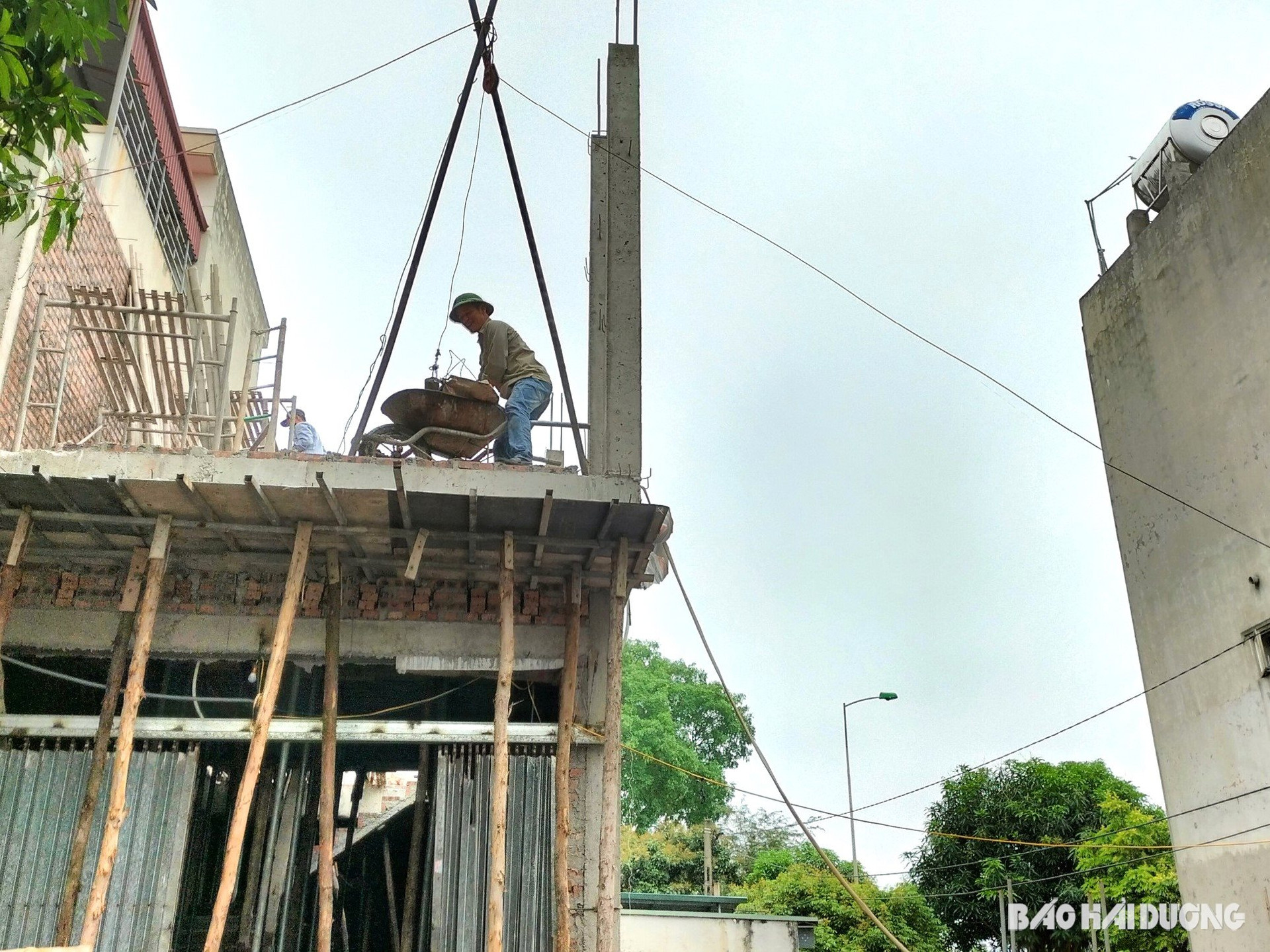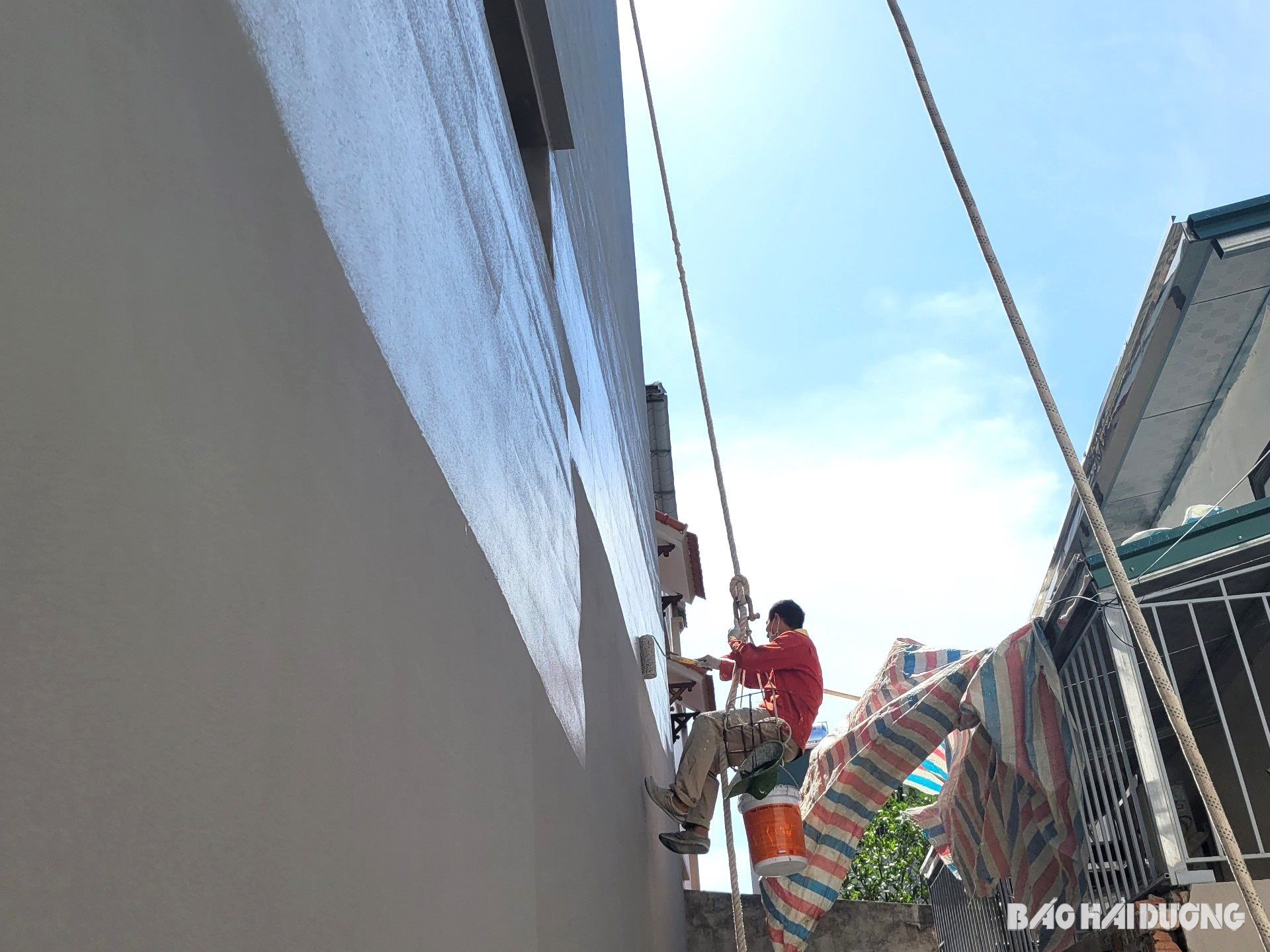At the end of the year, production and business activities are bustling, which also means an increased risk of work accidents. Labor safety and hygiene regulations need to be strictly implemented by businesses and employees.

Be on guard
To ensure the homeowner has time to organize a housewarming party before Tet, Nguyen Van Hoan's construction team in Lien Hong commune (Hai Duong city) has to start work 1 hour earlier and leave 30 minutes later every day. There are days when the whole team finishes lunch and then gets right back to work. Vu Van Hung, a member of the construction team, said: "We don't get to take a lunch break, so one day I fell off the scaffolding because I was a little sleepy. I know it's dangerous, but at the end of the year there's a lot of work and time pressure, so we have to try."
At the end of September, Mr. PVT in Cao An commune (Cam Giang) fell off a scaffolding while building a house in the new urban area of Tay Bac in Cam Vu commune. Although he was taken to the emergency room immediately, due to the severity of his injuries, Mr. PVT did not survive.
The end of the year is the time when establishments and enterprises step up production and business. Projects are in the "final" stage of completion, so there are many potential risks of work-related accidents. Some agencies, organizations, production and business establishments are often negligent in controlling and implementing occupational safety measures, leading to the risk of work-related accidents at the end of the year.

According to statistics from the Department of Labor, War Invalids and Social Affairs, from the beginning of the year to November 27, Hai Duong had 9 work accidents that killed 9 people. The fatal accidents were mostly at construction sites and places where workers were not guaranteed a safe working environment.
Although the number of work-related accidents tends to increase at the end of the year, in many places, businesses, production facilities and workers themselves are still subjective and negligent. Many businesses are busy chasing orders and do not tighten labor safety. Workers also do not comply with safety procedures and do not wear protective gear when working. This can easily lead to unfortunate work-related accidents.
Strictly handle
Faced with the risk of work-related accidents at the end of the year, the People's Committee of Hai Duong province has just requested enterprises and production and business establishments in the province to strictly implement 15 regulations to ensure occupational safety and hygiene. Enterprises should guide workers to self-assess occupational safety and hygiene risks before working; review and classify workers doing heavy, toxic and dangerous work to implement policies for these workers; inspect occupational safety techniques, ensure safety of machinery and equipment during the production process, especially at the end of the year, when there are many orders and workers have to work overtime...
The Provincial People's Committee also requires local leaders to strictly control year-end labor safety measures and take responsibility if labor accidents occur. When detecting violations of labor safety, the competent authorities will handle or recommend competent authorities to strictly handle them according to regulations.

Recently, the province's functional departments have also stepped up propaganda and inspections at many production and business establishments both inside and outside industrial parks to detect violations and make recommendations to correct them.
According to a representative of the Department of Labor - Employment (Department of Labor, War Invalids and Social Affairs), usually at the end of the year, the situation of work accidents is complicated, so the department will increase inspections of the implementation of related regulations at many units, especially in enterprises that employ many unskilled workers. The department also requested local authorities to coordinate in promptly handling violations.
Neglecting safety and hygiene at work can easily lead to work accidents and occupational diseases. To reduce work accidents, both business owners and employees need to be aware of self-protection, discipline, and safety procedures at work. In addition, authorities also need to step in to inspect and handle violations. Only when compliance with safety and hygiene regulations becomes a habit, work skill, and cultural behavior in the enterprise, can work safety be ensured.
Over the past 11 months, the Department of Labor, War Invalids and Social Affairs has supported the review and consultation of occupational safety and hygiene at 11 enterprises and distributed guidance documents to 60 enterprises at high risk of occupational accidents and diseases. The Department has also organized 4 seminars on occupational safety and hygiene for 200 enterprises and 250 company leaders, administrative and human resources officers, occupational safety officers, etc.
BAO ANH